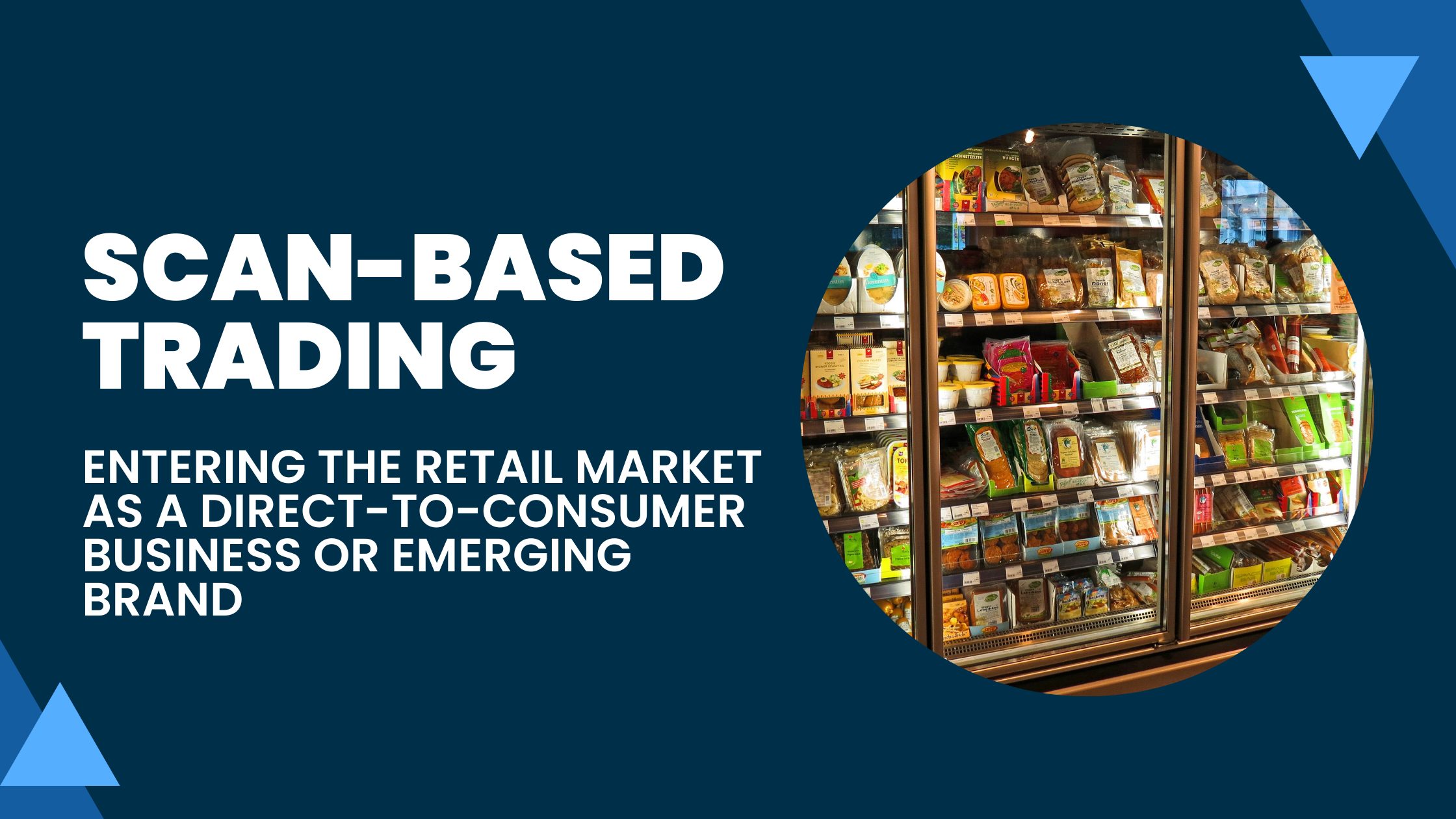Scan-based trading (SBT) has seen an uptick in popularity, with many retailers seeing it as an approach to increase their stability. As retailers continue to look upon scan-based trading as a favorable stocking strategy, there is a growing opportunity for direct-to-consumer businesses and emerging brands to take advantage. SBT can be a great way for suppliers who are looking to enter the retail market at scale, allowing the opportunity to maximize profit margins and prove product success.
Keep reading to learn how scan-based trading can benefit traditionally D2C and emerging brands in 2022.
Scan-Based Trading Makes it Easier for Retailers to Say “Yes” to New Relationships
SBT allows retailers to take the leap to stock emerging brands and traditionally direct to consumer products by mitigating their risk. In SBT, suppliers retain ownership of their stock until items are scanned, retailers pay for the stock, and split the sale at checkout. Scan-based trading makes retailers likelier to say “yes” to new relationships since the risk of paying for stock up-front is removed. This allows suppliers to:
- Grow their footprint in the retail environment faster
- Introduce their products to new markets
- Retain control of their own merchandising and marketing plans
Since retailers turn to SBT to mitigate their risk, can suppliers really benefit? With the right strategy, absolutely.
Using Scan-Based Trading to Get into More Retailers Faster
Emerging brands and direct-to-consumer sellers looking to expand to the retail environment know that this can come with a handful of obstacles. Scan-based trading allows suppliers to bypass the traditional retailer systems, removing many of the steps that slow time to market.
Scan-based trading also offers new levels of efficiency in the supplier-retailer relationship as compared to the traditional stocking model. SBT shrinks the supplier-to-shelf supply chain, typically cutting out retailer warehousing. This allows suppliers to have ultimate control over distribution timelines. Additionally, removing retailer pipelines means that suppliers have more control over where to focus their inventory, how much inventory to risk to catch sales, and the opportunity to offer a larger assortment of products.
Point of Sale Data allows Suppliers to Maximize Sales and Trial New Products
The scan-based trading model provides suppliers with store-level physical inventory count data. This along with retailer POS sales data, allows suppliers to keep track of granular stocking needs, geographic preferences, and overall product success. With the right data systems in place, suppliers can assess new products and optimize inventory at the store level. This ensures that the right inventory is making it to the right stores at the right time, maximizing sales.
Scan-Based Trading Opens Cash Flow
In the traditional model, payments to retailers involve tracking, invoicing, and payment terms. Oftentimes, turnaround takes between 90 and 200 days. With Scan-based trading, payments happen around the POS, rather than before or after. Payouts are generally weekly, increasing cash flow.
Maximize Success with a Great Merchandising Partner
Effective retail execution is essential for suppliers to get the most out of their scan-based trading relationships. With profits contingent upon products making it to checkout, the success of a supplier relies on their ability to maintain relevant stock and assess POS data. Suppliers can maximize their success by making sure they have the right team to execute their SBT strategy.
Experienced merchandising representatives ensure products are stocked attractively and appropriately. They maintain inventory reports to ensure optimal, store-level stocking.
RMS is a Proven Scan-Based Merchandising Partner
Retail Merchandising Services (RMS) is an experienced Scan-based trading partner. As industry experts, we bring all the knowledge and staffing needed to execute every step of your scan-based trading program from the receiving dock in the backroom, to a perfectly executed POG, to accurate store-level inventory audit reports.
Our services include top-notch:
- Visual Merchandising – making sure your planograms are set accurately and appealing to customers. Transitioning new products in and retired products out of the assortment.
- Inventory Management – Receiving shipments, taking physical inventory counts, and ensuring shelves are filled to capacity.
- Price Management – ensuring products are priced accurately and ringing correctly in the retailer’s system.
Curious about growing your retail footprint? Learn more about RMS’ scan-based trading services today!

